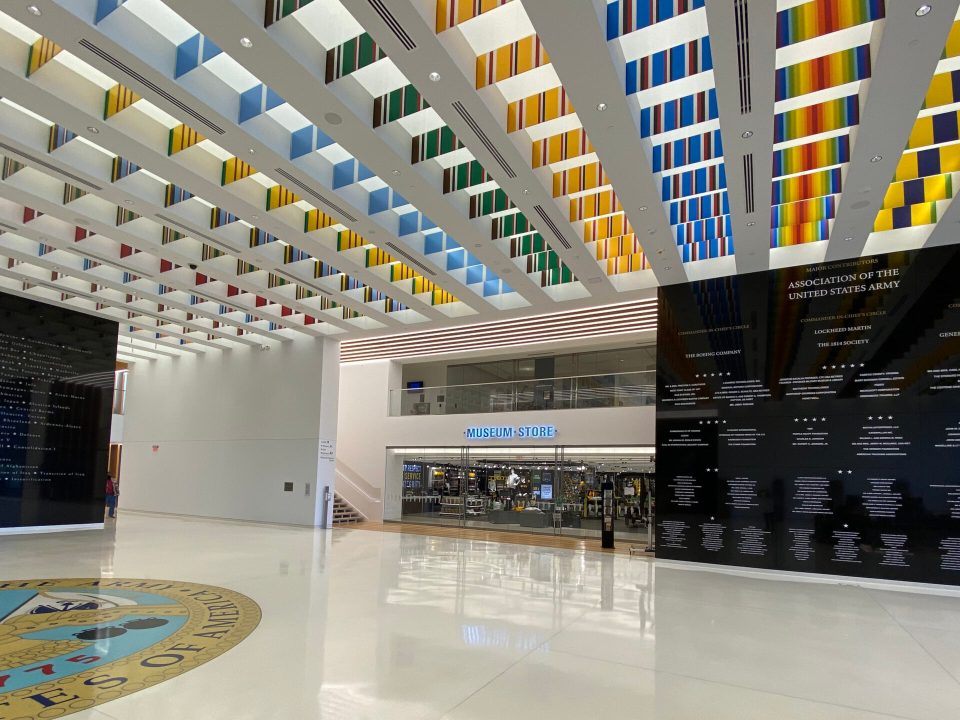
As a seamless extension of the museum experience and a culmination of the exhibitions on view, the museum store is uniquely poised to reinforce an institution’s mission and values. For many, increasingly, this includes sustainability.
In 2021, the topics of environmental responsibility and climate justice will see growing attention, as the Biden administration plans to prioritize them with steps like re-entering the Paris Agreement. This may lead to heightened scrutiny from consumers about sustainability. In fact, research shows that many Millennial and Gen Z buyers already consider a brand’s effort toward sustainability a prerequisite for making a purchase, and are willing to pay more for it.
When it comes to the unifying goal of protecting the planet, the museum store can be an effective vehicle for demonstrating the institution’s commitment toward conservation, and for inspiring guests to do the same.
“All spaces within a museum need to reflect a museum’s values and meet its visitors’ expectations for sustainability,” says Alison Rempel Brown, Board Member of the American Alliance of Museums and President of the Science Museum of Minnesota.
Here are some actionable steps museum retailers can take to create a positive environmental message and put sustainability on view:
Ecological Trends in Merchandising
- Ethical Sourcing: Finding vendors who manufacture goods responsibly and/or support ethical labor practices is a good first step. For instance, supporting businesses that use organic cotton can lower the impact on the environment, keep organic farmers in business, and accelerate wider changes in the apparel industry. Notebooks made from recycled paper, apparel made from recycled or organic textiles, and plush made without plastic beads are just a few examples we’ve seen in museum stores.
- Storytelling & Labels: By grouping different types of products around a central theme, shops can tell a broader “story” about protecting the planet and connect individual products to a richer context. Signage can educate guests with thought-provoking details about a product’s origin and related ecological facts. This type of storytelling brings the concept of sustainability to life, while encouraging guests to make responsible choices of their own.
- Merchandising Systems: Consider “greening” the displays and supporting items in your store, not just the products for sale. For example, plastic hangers are much less recyclable than other types and contribute to a disposable culture. Swap them for wood or bamboo, or create a folded apparel display to eliminate the need for hangers altogether.
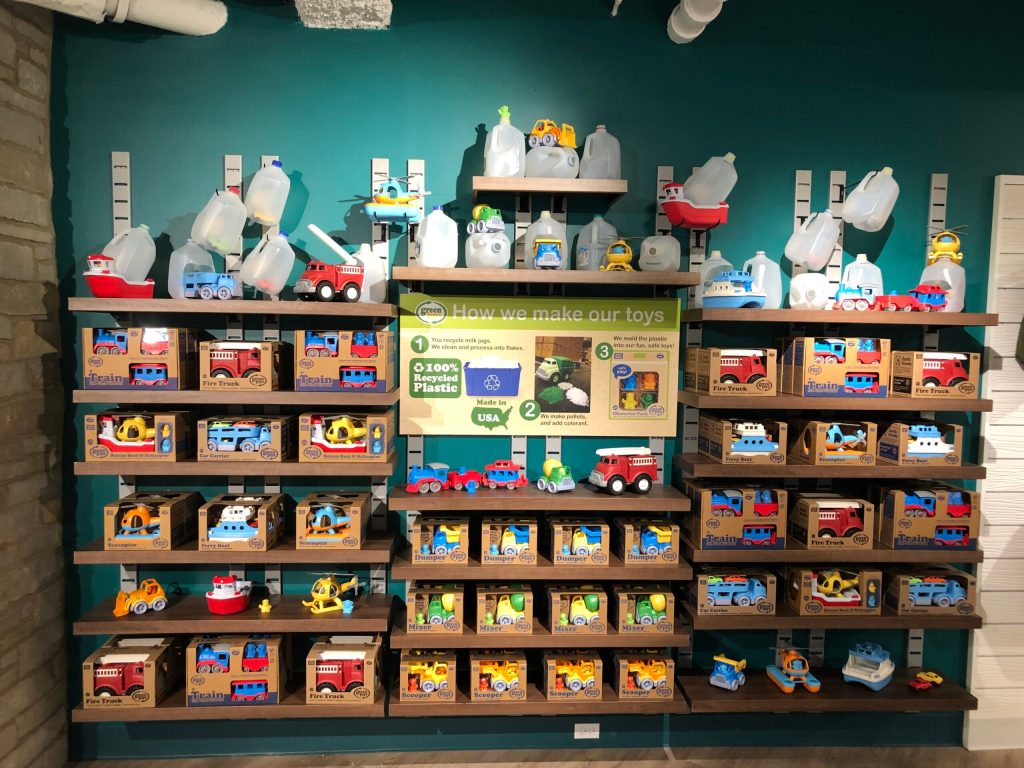
Smart Store Design
A green store design can utilize responsibly sourced materials in nearly every aspect, from display features and fixtures to flooring and paint. Just as important as the visible design details for consumers are the behind-the-scenes eco-friendly decisions.
Here are some ways a retail environment can uphold a sustainable atmosphere through its design:
- Refresh the wall colors using zero-VOC, low-odor paint.
- Replace plastic bins and sign-holders with more recycled/reusable and eco-friendly materials.
- Maximize the use of LED light fixtures, whose longevity will benefit the environment and lead to additional maintenance savings.
- Use signage material from renewable forest resources. Look for certified sourcing labels that indicate renewable, virgin, and post-consumer recycled fibers.
- If choosing an artistic centerpiece or focal point for your store, work with the artists to create a design made with post-consumer or low-embodied energy materials, or in a manner that produces less waste during the creative process.
- For wall solutions, use one of the broadly available options made from recycled contents, some of which can be reconfigured over time. For example, a brick slat wall made from FSC-certified sources creates a dramatic backdrop in some museum stores.
- Choose a durable, modular eco-friendly flooring option, which will have a big impact over time versus carpet. Factor into your selection the ability to service the material easily through green cleaning protocols.
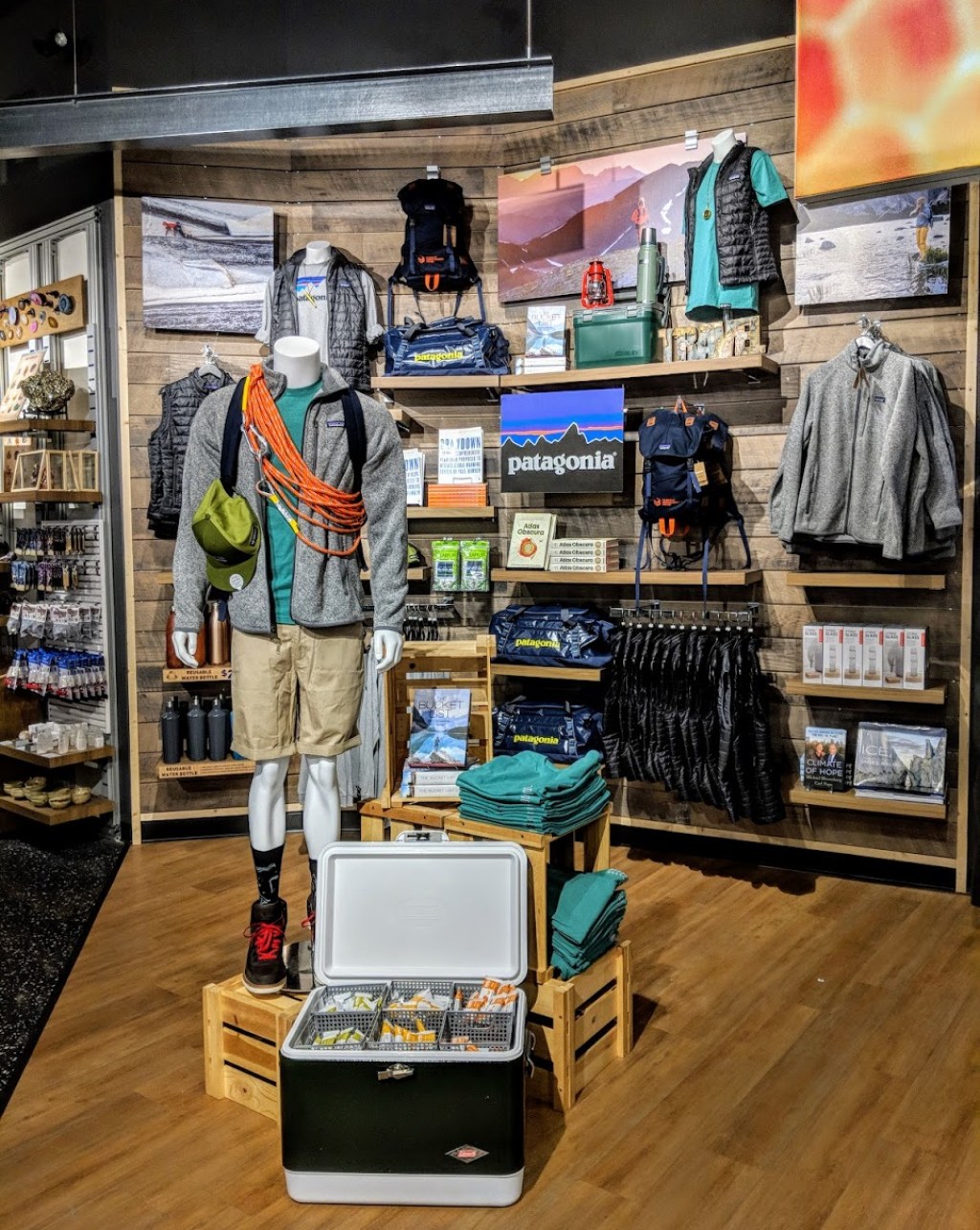
Green Building Strategies from Leadership in Energy and Environment Design (LEED)
- Follow the LEED guiding principles and start integrative design consultation early with the entire technical and operational team.
- Act responsibly during demolitions by sorting for recyclable and reclaimable materials and disposing of waste appropriately. Work with demolition contractors to record waste disposal and document recycling. Consult with the curatorial department if the museum already has a construction waste protocol in place.
- Use locally sourced building materials or those evaluated through lifecycle assessment whenever possible.
- Maximize window access to help the store use natural light and reduce the amount of energy needed to power artificial light.
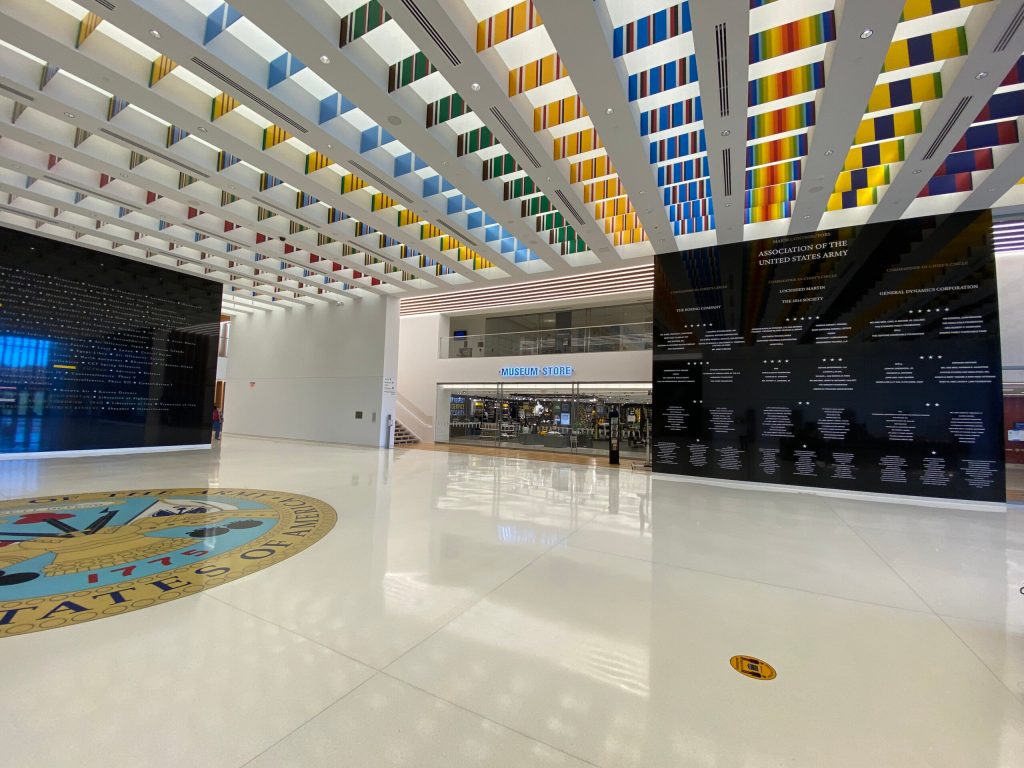
Waste Reduction
In the age of online purchasing, the attention on packaging and delivery is a prime opportunity. First, proper bundling could eliminate unnecessary trips. Second, putting a focus on clean transportation will lead to a low-carbon delivery chain. As for packaging, much can be done to eliminate unnecessary plastics. Here are a few ways a retailer can work with the supplier to reduce the footprint of goods:
- In bulk shipments, bundle smaller items in one outer bag using biodegradable material, instead of individually wrapping them in plastic bags.
- Work with suppliers on an updated packaging design that eliminates plastic windows, plastic ties, and other unnecessary single-use plastics. Always find eco-friendly alternatives to traditional packing materials.
- For durable items, minimize box-within-box packaging to reduce shipping fees and storage space.
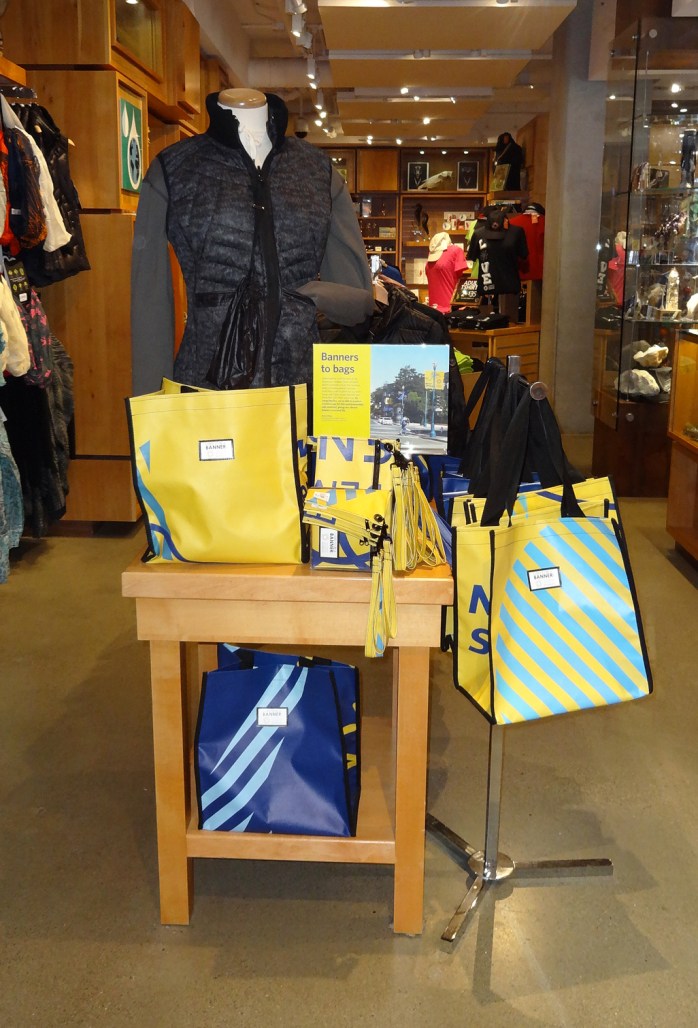
As museums evolve with a changing society, the merchandise available in their stores should also tell the story of that evolution. In being deliberate and intentional about how we direct these revenue-generating opportunities, we can build yet another new cultural angle towards sustainability.






It’s a weird thing to celebrate a new museum’s LEED certification for its “green” building, when such a huge swath of precious greenspace in a densely populated area (NOVA) was denuded of trees and vegetation for the construction of a new building with large open lawns and plenty of brand new black surface parking lots to soak up that hot Virginia sun.
Yes, the Army needed a national museum, but is this really representative of “greening” the DMV? When I visited opening week in 2020, the whole project seemed overblown and empty. Including the gift shop, which seemed way too big for its needs.
Thank you. Since this is focusing on retail and merchandizing, these are good discussion to be had with a larger group including the owner. With COVID, the retail landscape, inside or outside of museums, is also rapidly evolving too.
I find it amusing that the articles suggests throwing out perfectly good items, such as plastic hangers, bins and signage and replacing them with recyclable/reusable materials. By disposing of such items it is needlessly creating the very disposable society the article is meant to highlight.
Many of the store fixtures, although not the best, can be used for years when cared for and then sold or given away to other businesses to extend their lifecycle rather than creating the wanton waste suggested. Maybe the writer should make the suggestion as one when moving forward.
Laura to your observation of the store being too large, I have to stress that determining the proper size for the retail EARLY in the design process based on attendance projection is critical to successful retail for any new project. I have been involved in projects where we have both expanded stores that were initially woefully undersized and projects where we have decreased the original retail footprint. Building more store than you need causes a domino effect on many levels like initial cost, conditioning and maintenance, staffing, amount of stock investment… With any new project it is crucial to get it right the first time.
Jennifer, you too make excellent points!
In my experience of designing cultural retail spaces, a sensitive refresh rather than a wholesale renovation can often do wonders for existing stores while minimizing wastefulness and investment. I have been involved with several “light touch” updates where editing and refinishing of existing fixtures, correcting elements both visual and operational that have become muddled over time and the refocusing of staff has done wonders to the store’s look and operation. Discarded fixtures or display items have been repurposed for stock rooms or storage spaces, or have been offered to local groups or institutions for worthwhile second lives. The result is an ecologically sensitive solution that is both a more cost effective investment for the institution and produces a store that delivers the intended increased revenue goals.
Thanks for flagging it – the swapping part means they can be donated to organizations, not thrown out. Hangers may ultimately not needed with smart display. The Waste/Materials section of LEED actually strongly discourages disposal and encourages reuse and recycling. There are % metrics to strive towards. We are totally on the same page. We will see if some edits would convey that message more strongly. Thank you.
Absolutely! We agree, and did not intend to suggest “throwing out” materials by using the word “replace”. In fact, repurposing, refurbishing, reclaiming, donating, and continuing to use perfectly good items elsewhere are all better alternatives to discarding. Thank you for giving us the opportunity to clarify!
Thank you for this lens on retail aspects of museum work and addressing the powerful message that can be sent by integrating sustainable museum practices. Museums committed to sustainability can go beyond educational programs and exhibitions that explore these issues and integrate sustainability into internal operations and behind-the-scene actions and principles. Our museum has taken steps in this direction by offering fair trade and sustainable items with great success. We have also made it a priority to integrate sustainability into our fundraising efforts, from sourcing local food and wine to green event certification.
It was helpful to see specific examples and actionable ideas. We usually read about big picture goals (also very important) when it comes to sustainability, so I appreciate seeing both here. Thanks!
The ceiling in the first photo looks amazing! Museums have the unique challenge of curating a compelling visual experience while educating, so it must be especially challenging to incorporate sustainability. Would love to see more sustainability in smaller, local museums.